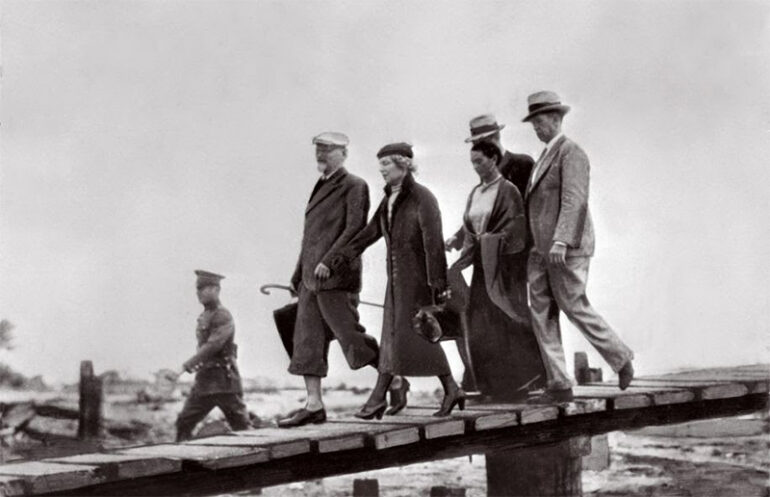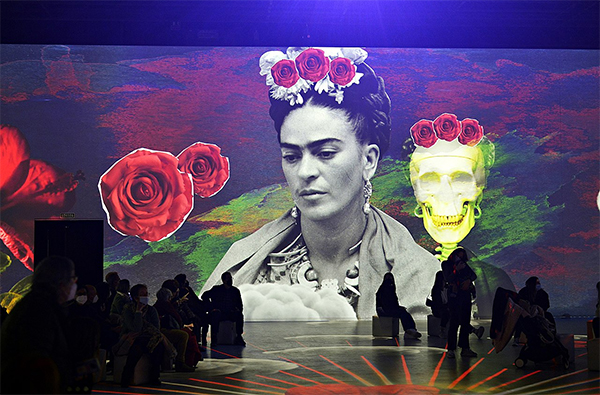Frida Kahlo, the celebrated Mexican artist, left an enduring legacy through her captivating and introspective portraits. Born in 1907, Kahlo’s early life was marked by triumphs and hardships, which shaped her unique artistic perspective. Influenced by her parents’ passions for photography and Mexican culture, her art became a reflection of her personal experiences, blending reality and surrealism in a captivating manner. Through her self-portraits, Kahlo expressed her deepest emotions and challenged societal norms of beauty, inviting viewers to connect with her on a profound level. Her symbolic and surrealistic portraits continue to inspire and resonate with audiences, leaving an indelible mark on the art world and empowering marginalized communities.
Early Life and Influences
Frida Kahlo was born on July 6, 1907 in Coyoacán, a Mexico City neighborhood. Her early accomplishments and tribulations formed her unique creative perspective. Kahlo’s interest in painting began after she recovered from a bus accident that left her with significant bodily impairments when she was 18 years old. Kahlo’s painting merged reality with surrealism to depict her personal experiences, motivated by her father’s passion for photography and her mother’s passion for traditional Mexican culture. Her colorful and intimate photographs show her challenging life to audiences all around the world.
Self-Portraits as a Form of Self-Expression
Frida Kahlo’s self-portraits provide an excellent outlet for her emotions and experiences. In her paintings, Kahlo expressed her physical and emotional anguish, accomplishments, and happiness. Her self-portraits included her distinctive unibrow, vivid traditional Mexican clothes, and intricate hairstyles, emphasizing her distinct individuality and challenging beauty norms. Each brushstroke gave a strong sense of vulnerability, allowing viewers to empathize with her. Kahlo’s self-portraits continue to touch visitors, demonstrating the transformative power of art for self-discovery and expression.
Symbolism and Surrealism in Kahlo’s Portraits
Surrealism and symbolism lend a distinct visual vocabulary to Frida Kahlo’s portraits. Symbols such as animals, vegetation, and cultural themes enhance her work. She frequently employs these symbols to communicate her emotions and Mexican background. Through realistic and imaginative themes, Kahlo leads viewers to a beautiful world where reality and imagination mix. Her images question reality by exploring pain, identity, and metamorphosis in the subconscious. The symbolism and surrealism of Kahlo’s portraits continue to intrigue art enthusiasts, leaving a lasting effect.
Legacy and Impact of Frida Kahlo’s Surrealistic Portraits
Frida Kahlo’s surrealistic portraits established her as one of the twentieth century’s most influential artists. Her distinct blend of personal narrative, symbolism, and surrealism inspires artists and admirers alike. Kahlo’s unapologetically honest exploration of sorrow, identity, and feminine experience broke society’s expectations and encouraged succeeding artists to be authentic. Her art promotes resilience and empowerment, particularly in underserved communities. Frida Kahlo’s surrealistic paintings will be recognized for their ability to transcend time and elicit universal emotions.
Surrealistic portraits by Frida Kahlo exhibit art’s capacity to portray human complexity. In her self-portraits, she fearlessly confronted her physical and emotional anguish, shattering societal norms and inspiring generations of artists to be themselves. Kahlo’s surrealistic and symbolic style produced a visual language that transcended representation, fusing reality and fantasy. Her background as a renowned artist reminds us that art has the power to transform and universally connect with our deepest sentiments and experiences.
Photo Attribution:
1st & featured image by https://commons.wikimedia.org/wiki/Category:Frida_Kahlo#/media/File:Trotsky_&_Khalo.jpg
2nd image by https://commons.wikimedia.org/wiki/Category:Frida_Kahlo#/media/File:Biografia_Frida_Kahlo_IDEAL_Barcelona_(12).jpg

